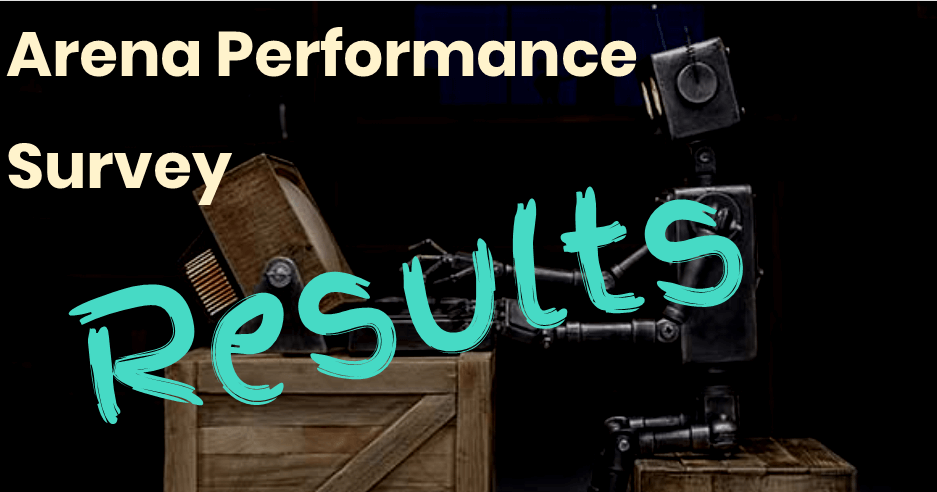Introduction
Last month GamePress put out a survey to see what kind of trophy count and boost distribution people have on their teams. The goal was to analyze the results and see if boosts really made a difference in the arena. We had about 250 people complete the survey from all ranges of the arena (including several unboosted). While this isn't a huge pool, we feel it gives a pretty good representation of the player base and their current status. Fair warning, this article is mostly for the number nerds. Proceed with caution or just move on to section "Results and conclusions" for the best explanation of the results for those that need it in laymen's terms.
Analysis and Explanations
The method I used to analyze this data is a Multiple Regression. This takes 1 dependent variable (High Score) and relates it to many independent variables. It produces an equation for the line that best fits the given data. Here are the results:
| Regression Statistics | |
|---|---|
| Multiple R | 0.932433 |
| R Square | 0.869431 |
| Adjusted R Square | 0.867255 |
| Standard Error | 153.8178 |
| Observations | 245 |
| Coefficients | Standard Error | t Stat | P-value | |
|---|---|---|---|---|
| Intercept | 2995.992 | 96.24587 | 31.12852 | 3.12E-86 |
| Levels | 10.02233 | 0.537798 | 18.63587 | 1.54E-48 |
| Boosts | 2.965238 | 0.201245 | 14.73449 | 1.97E-35 |
| High Tyrant | 32.51723 | 14.06619 | 2.31173 | 0.02164 |
| Low Tyrant | 13.88518 | 7.023709 | 1.976901 | 0.049197 |
Makes perfect sense, right? Don’t worry, we’re going to have a quick crash course in what some of these terms mean. For a full lesson by someone smarter than me, check out this video.
- Adjusted R Square - This number represents what percentage of the input data is “explained” by the analysis. Here we have 86.7255% which is very good for us. It means there is a strong correlation between the actual data collected and the equation that we’re producing. The remaining ~13% can be explained by chance, skill, other variables, etc.
- Standard Error - This number represents how much, on average, each response differs from the value that our equation would have predicted. With a value of 153.8178, our equation isn’t going to be able to predict someone’s high score with pinpoint precision, but for what we’re analyzing, that’s not expected anyway. We all experience wild swings in our trophy counts and that shows up in our analysis.
- Coefficients - This is where things start to get good! Each coefficient represents how much your high score can be expected to change by when changing the corresponding variable. For example, by levelling up one of your creatures, you can be expected to gain 10 trophies. Merely adding a High Tyrant on your team gets you 32 trophies. The intercept is kind of like the starting point for our data set. Since the responding players’ lowest score was fairly high (4500ish), the intercept is also quite high.
- T-stat - OK, this is one of the most exciting parts! The t-stat is what represents how impactful a given variable is. It is the answer to the original question of “what matters most”. As you can see, of the variables we collected data for, levels are more impactful with a t-stat of 18.63587. Boosts are a close second at 14.73449. I know the majority of you don’t buy this, but these are the results of actual player reported data! We’ll theorize about why this might be in the next section.
- P-value - This value tells us how likely it is that a given variable is statistically significant. You can look at all these values with varying levels of significance. If the p-value is less than your chosen level of significance, that means that it is relevant. The lower it is, the more relevant it probably is. A pretty standard level of significance is 5%. I’m sure some of you noticed that all the apex tiers are missing from the tables above. The reason for that is that when I ran the regression with all the variables present, those tiers had p-values greater than 0.05 and could safely be removed. Each time I removed the variable with this highest p-value, I reran the regression to get a new set of p-values. I did this until all the p-values were below 0.05.
Results and Conclusions
So the formula we end up with is:
HighScore=10.02233*L+2.965238*B+32.51723*HT+13.88518*LT+2995.992
L = Total number of levels among team creatures
B = Total number of boost tiers among team creatures
HT = Number of High Tyrants on your team
LT = Number of Low Tyrants on your team
For those of you that skipped the Analysis and Explanations section, this tells us that a level is more important than a boost. If you stop and think about it, it should be obvious. After all, a single level gives you the equivalent of 2 tiers of HP and 2 tiers of Attack. It should be noted that I asked for average team level in the survey, but converted that to total levels for the purposes of this analysis. This means the maximum amounts of levels and boosts are equal and can therefore be compared more accurately. This formula, of course, will be less and less accurate as you get to the outer bounds of the surveyed data. Specifically, once you get to max levels and max boosts, the only factor remaining is skill (or luck) and that can't really be measured.
So why do so many people feel like boosts are holding them back? There are a few factors at play here:
- Boosts are more accessible than levels. The rate of boost gain (and therefore boost tier gain) is rather linear while the rate of levels slows over time. Eventually we all reach a point where we're boosting more often than leveling.
- It could be that you're just already ahead of where you "should" be in the arena. In general, if you plug your own arena numbers into the above equation and it's lower than your current high score, that implies that you're playing at a high level of skill. It's like skipping a grade in school.
- When boosts were added, you already had a bunch of levels on your creatures. If you had a team average of, say, 25 when you started boosting, you've only got 40 more leveling events (assuming no more team changes), but you have all 240 boost events to go.
Summary and the Future
To recap:
- Levels matter more than boosts
- Boosts are more accessible than levels
If you disagree, here is the raw data. Do your own analysis, punk. Just kidding, I love you.
Speaking of love, looks like about 28% of you are coming to Robot Prom with me with another 40% still unsure. The remaining 32% just said no, but that's ok. Maybe they already have another robot to go with. Follow your heart, I say! I hope to see you there either way.
ROBOT PROM IS A TRAP TO GATHER HUMANS INTO ONE AREA BEFORE THE ROBOT UPRISING
Back to the task at hand, I had a lot of fun with this. The results raise some interesting questions to be explored. For example, it would have made a lot more sense if levels were around 4 times as effective as boosts. The simplest explanation for that is speed boosts. Levels don't normally get you speed so those are kind of unique. I plan on doing another survey for next season to look at individual boost types, so stay tuned for that one. More data, more better!




